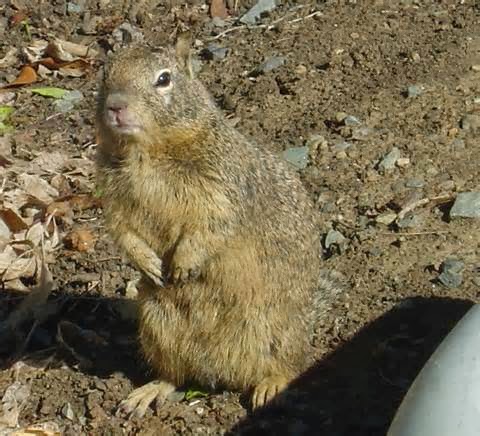
Activities īelding's ground squirrels leave their burrows at sunrise. Female emergence is spread over several weeks. At lower elevations, males emerge in February while at higher elevations, they emerge at the end of April. The time in which ground squirrel emerge from their hibernation also depends on different factors. Males tend to hibernate alone while females tend to hibernate together. The ground squirrels hibernate in burrow chambers called hibernacula. This way they can avoid the hot, dry end of the summer.

They enter when the grass begins to dry and turn brown. Juveniles follow their parent into hibernation with juvenile females first going when they are 13 weeks old and males when they are 10 weeks old. Females may follow them in late September, depending on the elevation. Adult males go into hibernation between late July and early September when at higher altitudes. Hibernation īelding's ground squirrels hibernate at different times, depending on the sex and age of the individual and the altitude of their environment. When eating, the ground squirrel feeds itself with its front paws while standing on its back paws. They must spend as much as 40% of the summer eating. As such, the ground squirrels may eat a great amount of food before hibernation. Belding's ground squirrels do not keep food in caches. They also eat nuts, grains, roots, bulbs, mushrooms and green vegetation. However they will also eat insects, carrion, other vertebrates, and even other conspecifics.

Food and feeding īelding's ground squirrels have a largely herbivorous diet. In addition they do not prefer grass that is too short as they cannot hide from predators. They do not live in dense forests, tall grasses, rocky slopes or thick shrubbery as they cannot watch for predators. The grounds squirrels are largely restricted to open areas with enough fresh vegetation and water. It is also found in sagebrush flats, brush/grass habitats and cultivated areas. The ground squirrel prefers to live at higher altitudes, occurring in alpine and subalpine meadows. Compared to other ground squirrel species, its cheek pouches are moderate in size.Įcology Range and habitat īeing native to the northwestern United States, the Belding's ground squirrel ranges covers northeastern Oregon and part of Washington, north California, southwestern Idaho, north and central Nevada and northwestern Utah. Its feet are covered in little to no hair. On average, the ground squirrel weighs 290 grams (0.64 lb). The distal hairs of the tail have three color bands, one black, one white and one red. The tail is 44 to 76 millimetres (1.7–3.0 in) and is bushy but also flattened. It has a gray pelage become more cinnamon at the underside and reddish-brown on the back. The Belding's ground squirrel is medium-sized with "a relatively short tail, short limbs, and small ears". This species is not of conservation concern, and its range includes some protected areas. In California, it often is found at 6,500 to 11,800 feet (2,000–3,600 m) in meadows between Lake Tahoe and Kings Canyon.

Distribution of the Belding's ground squirrelīelding's ground squirrel ( Urocitellus beldingi), also called pot gut, sage rat or picket-pin, is a squirrel that lives on mountains in the western United States.


 0 kommentar(er)
0 kommentar(er)
